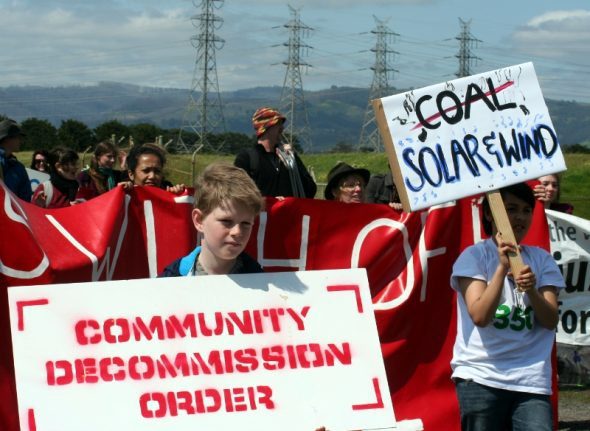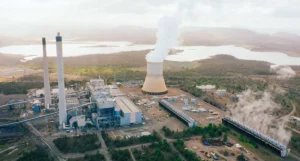In 1897 in a case of mistaken identity Mark Twain was reported as being dead. He corrected the reports, telling the New York Journal “The report of my death was an exaggeration”.
Last week we saw several news stories claiming that the Federal Government’s contracts for closure program to retire our most polluting power stations is in trouble. Even Giles Parkinson, the editor at RenewEconomy, claimed contracts was “dead in the water”. These claims, like Mark Twain’s obituary, are greatly exaggerated, and from what I can gather are based on little substance.
The reports of the death of contracts for closure appear to have 2 origins.
Firstly ACIL Tasman analyst Paul Hyslop is telling anyone who will listen that contracts for closure will be too expensive and government is backing away, for example see this story on ABC. His argument is that due to the doubt about the future of the carbon price if Tony Abbott ends up in the Lodge, the brown coal generators have renewed confidence about their long term profitability and will want a larger cheque. There’s some truth to this argument. Certainly Tony Abbott’s wrecking ball campaign is causing some parts of industry to think twice about making the shift to a low emissions economy. If you might be able to get away with pollution-as-usual for a few more years yet why rush into anything?
It’s also true that contracts for closure will not come particularly cheap. However, the main reason for this is not uncertainty about a future carbon price. The problem is that generators are receiving exceedingly generous compensation to keep polluting in the early years of the price on carbon. This year Australian taxpayers are writing cheques for $266 million for Hazelwood, $257 million for Yallourn, $28 million for Energy Brix and nearly $60 million for the two Port Augusta power stations.
It’s interesting that ACIL Tasman doesn’t mention these figures, but there’s probably a good reason for that. As Guy Pearse pointed out in his book “High And Dry”, ACIL Tasman enjoys a status as the coal industry’s favourite consultant. It is in the coal industry’s interest to inflate the price of the seal as much as possible. Journalists reporting ACIL Tasman’s comments should do so with eyes wide open.
There is another side to the story about the value of the brown coal generators and expected future earnings, and that’s a story that RenewEconomy has been telling for several months. It’s the story of falling electricity demand, record low wholesale energy prices, and falling profitability for brown coal generators. All of these factors will drag down the cost of any contracts for closure, and I would suggest that any commentator who is not taking these factors into account is either running an agenda or not seeing the full picture.
The second reason some are questioning the Government’s commitment to contracts for closure is the fact that negotiations are well into overtime, and some are suggesting that the parties are meeting infrequently. Negotiations were originally intended to conclude by June 30, and indeed the long delay could be viewed as worrying.
So what is going on with contracts for closure and why the delays? At Environment Victoria we’ve been as closely engaged with the process as anyone who’s not actually party to the negotiations. When it was clear the carbon price was going to be less than adequate and the ALP was determined to provide compensation to generators to keep polluting we lobbied for the program to ensure the price on carbon package retired clunkers like Hazelwood. We’ve tracked every public statement made about contracts, pestering Ministerial advisors and talking with anyone who might know anything. However, the conclusion I’ve drawn is that no-one who is not actually party to the negotiations has any real idea of what’s going on Inside the negotiations.
There is however a logical explanation for the long delay. The floor price on carbon for when we move to an emissions trading scheme is yet to be finalised . This makes it very difficult to assess the generators future carbon liability and therefore the value of the power stations. With resolution of this issue reportedly imminent the government should very soon be in a position to get to the pointy end of the negotiations and secure contracts for closure.
I’m confident that the Government will deliver on its contracts for closure promise, for three reasons.
Firstly, the Gillard Government is getting hammered by Tony Abbott on trust, and is responding with a narrative about delivery. Delivering on public commitments like contracts for closure is critical to rebuilding trust and being seen to follow through on commitments.
Secondly, there are many businesses that have a strong interest in contracts for closure being delivered. Any polluter big enough to have a carbon liability under the Clean Energy Future legislation is trusting that the Gillard Government will deliver on contracts for closure to deliver up to 20 million tonnes of abatement. If contracts for closure is not delivered, the carbon bill of every liable party increases to meet the shortfall. You can assume that Australia’s boardrooms understand this and are making strong representations.
Finally, if contracts for closure is not delivered, the integrity of the Clean Energy Future package, and all the compromises it contains to knit together the Multi-Party Committee on Climate Change, start fraying at the edges. If this key plank of the package is not delivered, why would MPCCC members approve next year’s budget with $1.1 billion of compensation for generators? After all, if the government is just cherry-picking and implementing the parts of the package they like why would the Greens et al endorse the parts of the package they didn’t like?
There are, of course, other ways to force the closure of our most polluting power stations. Most policy purists would prefer a higher carbon price and no compensation for generators. However, the MPCCC negotiations delivered the strongest policy package that the Australian body politic is capable of at the moment, which may ironically be both inadequate from a climate science perspective but also unable to sustain Abbott’s fear-based campaign.
If the Government doesn’t deliver on contracts for closure, it’s very difficult to see the next opportunity to retire power stations like Hazelwood that the community wants to see replaced. That’s what makes enacting the carbon floor price and then delivering on the commitment to retire around 2000 MW of our most polluting power stations so important, both for the climate and for the integrity of the Gillard Government’s clean energy future narrative. As Mark Twain also said, “Action speaks louder than words but not nearly as often.” It’s time for action on contracts for closure.
Mark Wakeham is Campaigns Director for Environment Victoria who have led the campaign for the replacement of Hazelwood power station.








